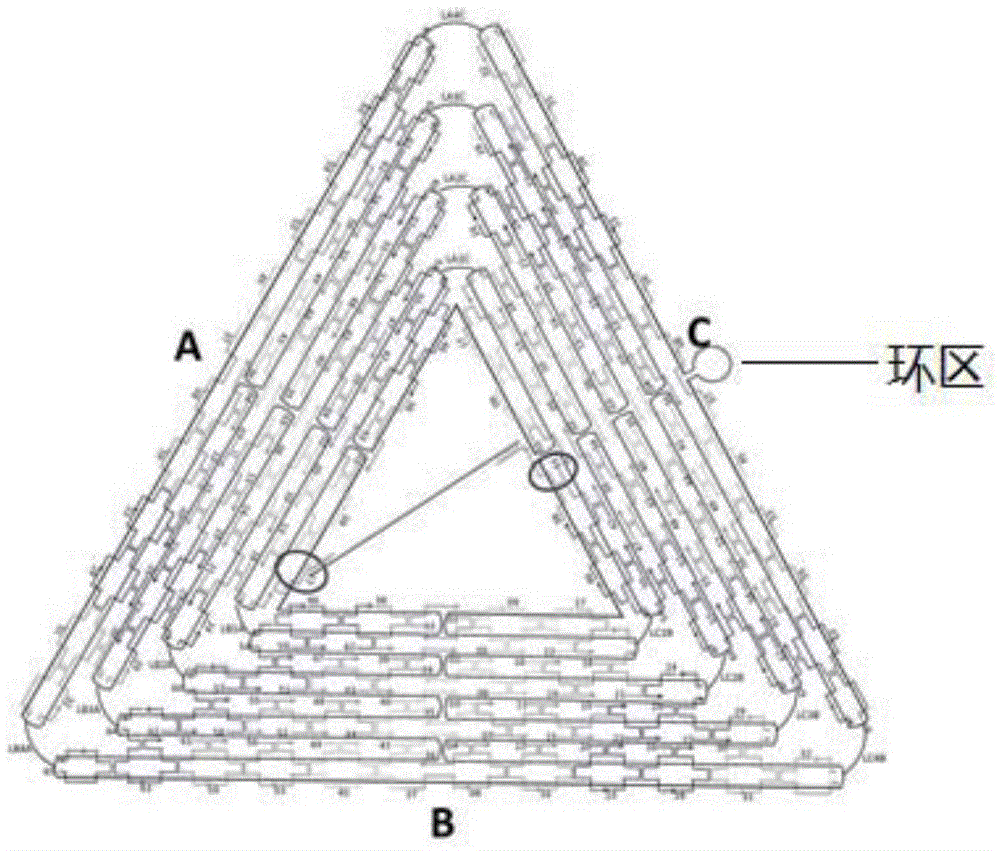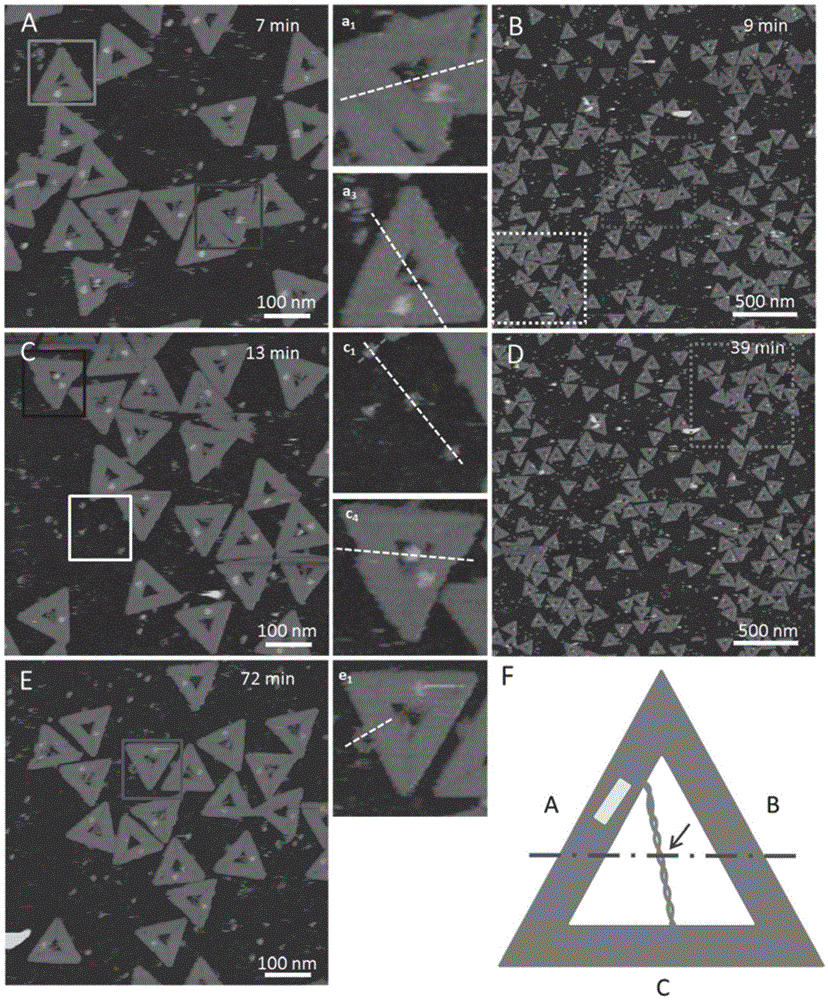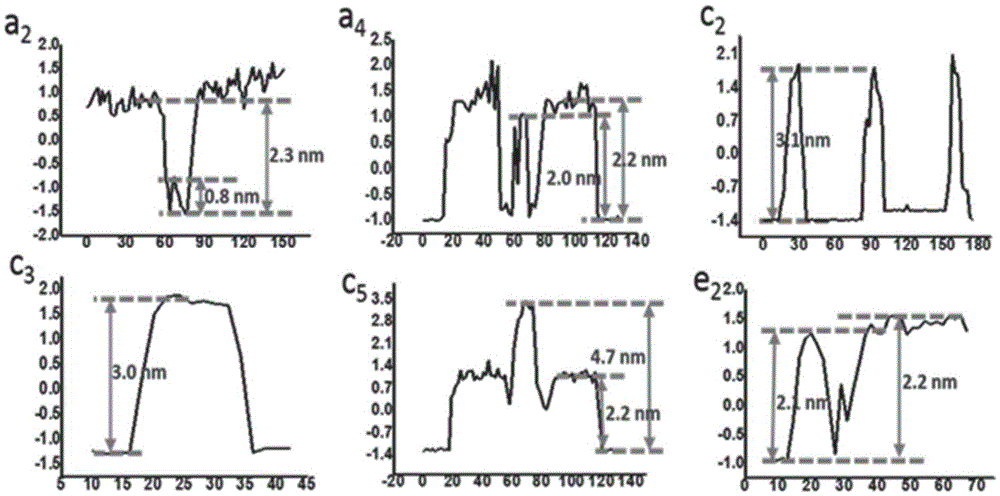Method for detecting influence of mechanical force on interaction of DNA (deoxyribose nucleic acid) and DNA polymerase
A polymerase, mechanical force technology, applied in the nano field, that can solve problems such as lack of methods for the interaction of DNA and DNA polymerases
- Summary
- Abstract
- Description
- Claims
- Application Information
AI Technical Summary
Problems solved by technology
Method used
Image
Examples
Embodiment 1
[0034] Example 1 Preparation of Equilateral Triangular Hollow DNA Origami
[0035] The hollow DNA origami designed in this example utilizes M13mp18 DNA and staple single-stranded self-assembly to form an equilateral triangle pattern. The preparation method of the equilateral triangle hollow DNA origami is as follows: the single-stranded DNA M13mp18 of the circular long scaffold and the two strands of A17 and C33 are respectively The staple strand DNA collection ABCL of the sequence shown in SEQIDNO.1 and SEQIDNO.2 is replaced by the sequence table and mixed in TAE-Mg 2+ Buffer system (40mM Tris-acetic acid, 1mM EDTA, 12.5mM MgCl 2 , pH8.0), and then placed in a PCR instrument to anneal from 95°C to 20°C at an annealing rate of 0.1°C / 10s, where the molar concentration ratio of M13mpl8 to staple chains was 1:10, and TAE-Mg 2+ The buffer was ultrafiltered to prepare the assembled hollow DNA origami.
[0036] The side length of equilateral triangle hollow DNA origami in the pres...
Embodiment 2
[0037] Example 2 Preparation of single-stranded DNA template-DNA origami
[0038] Hybridize the 114nt DNA template whose sequence is shown in the sequence table SEQ ID NO.3 to the hollow DNA origami prepared in Example 1, so that it is located in the center of the hollow DNA origami, and its two ends are fixed on the hollow DNA origami by hybridization to form a single strand DNA template-hollow DNA origami, the steps are as follows: mix excess 114nt DNA template with hollow DNA origami, the molar ratio of 114ntDNA template and hollow DNA origami is 50:1, then place in a PCR instrument, anneal from 50°C to 15°C, the annealing rate 0.5°C / min, with TAE-Mg 2+ Single-stranded DNA template-hollow DNA origami was prepared after buffer ultrafiltration. It was determined that the molar concentration of the prepared single-stranded DNA template-hollow DNA origami was 0.15nM.
Embodiment 3
[0039] Example 3 AFM imaging and analysis of interaction between DNA and DNA polymerase Klenow fragment
[0040] Mix 3.0 μL of the single-stranded DNA template-hollow DNA origami prepared in Example 2 with 1.0 μL of Klenow fragment (KF) at a concentration of 85 U / mL in a test tube, incubate at 25°C for 10 min, and add 1.0 μL of Klenow fragment (KF) at a concentration of 62.5 After μM of dNTPs, immediately take 3 μL of the above sample and drop it on the newly dissociated mica sheet, and inject TAE-Mg into the liquid pool 2+ After 30 μL of buffer solution was scanned and imaged. With "J" scanning head, "tapping" mode. Adjust the scanning parameters in the small force area (F<200pN), and use the real-time dynamic scanning method of AFM in situ to collect AFM images of samples at different stages, including DNA origami, single-stranded DNA template-hollow DNA origami, and during replication. After copying the hollow DNA origami, the images were processed and analyzed with NanoS...
PUM
 Login to View More
Login to View More Abstract
Description
Claims
Application Information
 Login to View More
Login to View More - R&D
- Intellectual Property
- Life Sciences
- Materials
- Tech Scout
- Unparalleled Data Quality
- Higher Quality Content
- 60% Fewer Hallucinations
Browse by: Latest US Patents, China's latest patents, Technical Efficacy Thesaurus, Application Domain, Technology Topic, Popular Technical Reports.
© 2025 PatSnap. All rights reserved.Legal|Privacy policy|Modern Slavery Act Transparency Statement|Sitemap|About US| Contact US: help@patsnap.com



